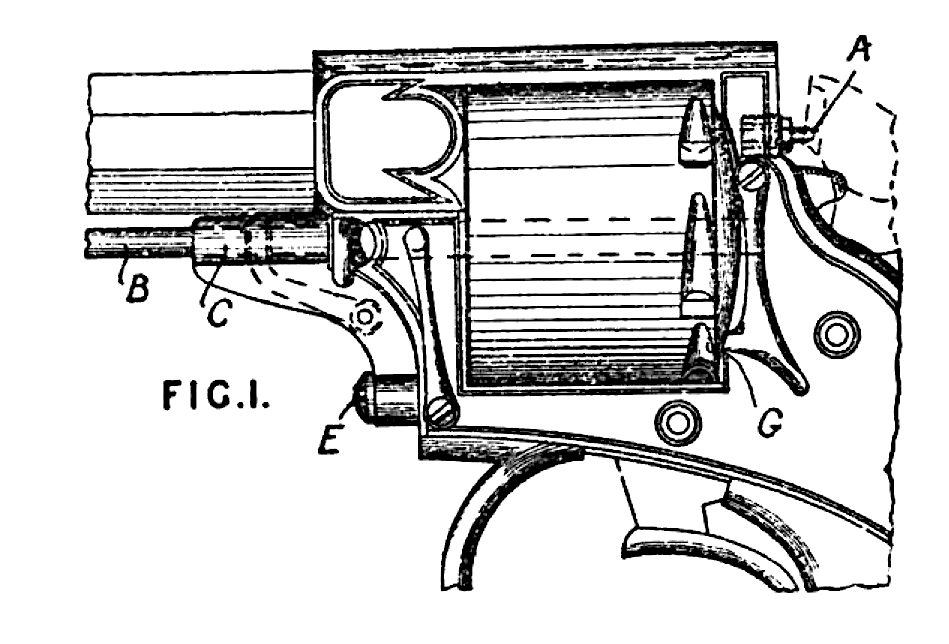British patent 285
Ejector, Cylinder Detent, Hammer/Firing Pin
Breech actions, revolving-chamber. – The double-action lock for revolvers, described in Specification No. 1913, A.D. 1856, is applied to a breech-loading revolver in order to fire a central-fire cartridge. For this purpose the hammer is made to strike a spring firing-pin A working in a hole in the pistol frame concentric with the cartridge. The striking part of the hammer is hollowed out so that the hammer when at half-cock forms a safety cover for the striking-pin, as shown by dotted lines. The plunger of the extractor similar to that described in Specification No. 1862, A.D. 1863, is made to work in a straight line, either by having a square groove formed in it or by having two segments of the circle of the plunger cut away through its whole length. A corresponding projection for the groove, or a groove for the rib, as the case may be, is formed in the frame of the pistol. Another improvement consists in arranging an extracting rod B to line underneath the barrel when not in use. The rod slides in a guide C which is pivoted to the frame at E so that the rod can be turned into line with the chamber for extracting the empty case. When the guide is returned to its position ready for carriage, it serves as as top for the axis of the revolving chamber. A spring is fixed on the tail piece of the guide, to press slightly on the rod and cause it to slide steadily. A snap spring may also be added to retain the guide in any required position. To fix the revolving cylinder in any position, a hole, slot, or nick is formed in the hollow shield formed at G in the frame of the pistol, and a sliding or pivoted bolt works through the same. The lifter which turns the revolving chamber is formed with a hollow on the inner side for carrying the spring which causes the lifter to catch and act in combination.

